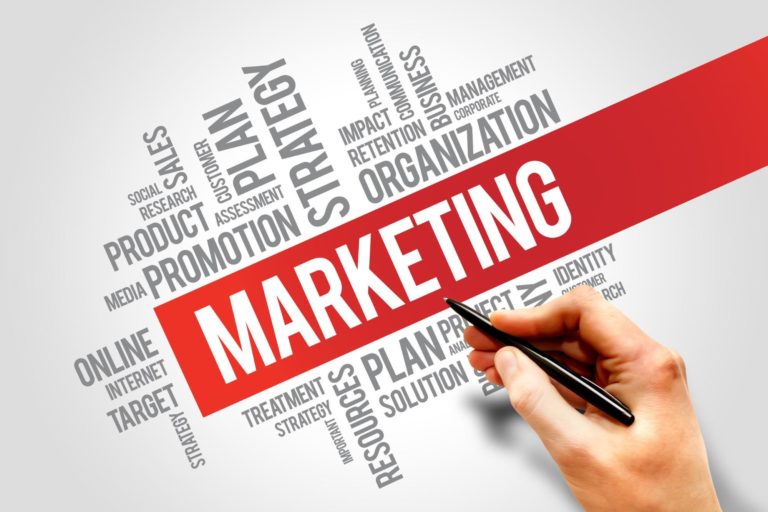
With so much of the marketing landscape online, your business website is one of the most powerful tools you have. It acts as a constant salesperson, so it has the potential to be your biggest asset and the focal point of your marketing efforts.
Unfortunately, the changing digital trends can take your website from cutting-edge to outdated quickly, which prompts customers to click away from your site. Website user experience is incredibly important for your business’s online success, but it requires an understanding of the problems your website visitors have.
Whether you need a full redesign to bring your website up to date or you just need to tweak a few things, here are some tips for improving your website’s user experience.
White Space

Many business owners feel that white space on their website is a waste, since it could be used for graphics, call-to-action, advertising or other purposes. That couldn’t be further from the truth, however, since white space is necessary to good design.
Busy pages are more likely to cause a visitor to click away, but an abundance of white space makes your content more legible and helps the user focus on the elements around the text. It also feels fresh and modern, as well as giving the visitor an instant impression of your brand.
However, white space that impedes the copy and graphics on your page can be a problem. You want a balance between the important aspects of your business you need to communicate quickly, usually on the top of your page, and white space that highlights the graphics and text for more legibility.
Website Speed
 There’s nothing more frustrating than navigating a site and waiting for slow pages to load. More and more people are using mobile devices to access website as well, which can amplify load problems on your site. Whether they’re surfing on their phone, laptop or tablet, your visitors count on your site to deliver the information they want quickly.
There’s nothing more frustrating than navigating a site and waiting for slow pages to load. More and more people are using mobile devices to access website as well, which can amplify load problems on your site. Whether they’re surfing on their phone, laptop or tablet, your visitors count on your site to deliver the information they want quickly.
Slow page load interrupts the experience for the user as well, causing them to divert their attention and bounce from your website. If you’ve ever accidentally clicked a link or ad because you were impatient to get to the page you want, you can understand why this is a problem for many consumers.
To improve your website speed, compress your images before you load them on the pages. Image file size is one of the biggest factors in slow load times. You can also find out more about your page speed with this free service from Google, which helps with both mobile and desktop format.
Call-to-Action
 Consumers in the digital age are already accustomed to using call-to-action (CTA) cues to navigate websites and find the information that’s most relevant to them. Because of this, it’s vital that your CTAs are clear and easy to follow, so your website users can find exactly what they want.
Consumers in the digital age are already accustomed to using call-to-action (CTA) cues to navigate websites and find the information that’s most relevant to them. Because of this, it’s vital that your CTAs are clear and easy to follow, so your website users can find exactly what they want.
Depending on the design of the rest of your site, color can play an important role in prompting action from visitors. There’s powerful psychology in color usage, so consider the emotions you’re looking to evoke and use your color combinations strategically.
Your word choice is important as well, since it needs to inspire the visitor to take the action you want them to take. Without an emotional connection, your visitors won’t take action, so keep your words bold and exciting.
Hyperlink Differentiation
Including links on your website means you want visitors to click them. If these links aren’t visible or are located too close to other links, your visitor may not realize they’re links and may not click them.
Simple visual cues, such as text of a different color, bold text or underlined text, are all it takes to differentiate a link and prompt visitors to click it. Longer link titles are also easier to identify than shorter links.
Bullet Points
Online users often have their attention divided, so they want to quickly skim to find the information they need, such as benefits and features of a product and service.
Bullet points are the easiest way to include a lot of information in a format that’s quick to read and process. They’re also more attractive on a website than huge chunks of text, which can be a bit daunting to read.
Also, keep in mind that bullet points aren’t restricted to simple dots. You can use smaller images that relate to the information in the bullet, quick statistics or other important points that help your visitor process the information you’re giving them.
Strategic Images
The availability of information online has created savvy and skeptical consumers that are much better at judging business websites. The moment your visitor arrives on the site, they’re assessing the graphics and information to decide if they want to continue browsing.
If you’re using generic stock photos that can be found all over the internet, they’re less likely to trust your brand. There’s nothing unique about your photo, so why would there be anything different about your brand?
Stock photos can be a great addition to your page and can break up the text, but whenever possible, use real photos and try to communicate your brand message with the images you choose to present.
Headlines
Your headings and content should be informed by your customers’ needs and focused on target keywords for your audience. Search engines often prioritize headings over content, so choosing the right headlines and keywords can significantly boost your ranking.
On top of that, headings also guide your visitors through your website and help them find the content they need, so it’s important to keep them informative and relevant, as well as distinctive in size or color.
Consistency
Throughout your website, all your heading sizes, color schemes, spacing, button styles, fonts, design elements, photos and other aspects should fit a common theme and be consistent across pages.
This not only creates a fluid, trustworthy experience for your website’s visitors, but it also assures them that they’re still on your site and haven’t accidentally clicked away.
If your site isn’t consistent, it can lead your visitor to feel confused or lost, so they’re likely to lose trust in your brand. For the visitor, inconsistencies in your website’s design show a lack of pride and attention to detail, so it’s likely that you don’t take pride in your product or service.
Errors
While every website may have a 404 error (page not found), a lot of 404 errors that aren’t corrected will give your visitor a bad impression of your brand. If they’re taking the time to browse your site and are looking forward to the next page they want to visit, coming upon a 404 error is a disappointment. It can also cause the visitor to leave your site and search for a solution elsewhere, since they may believe they’ll come across other 404 errors.
If your site is big, searching for 404 errors constantly can be a pain. Fortunately, there are several tools available to check for page-not-found errors on your website, such as this one, so you can correct these problems quickly.
Mobile Optimization
As we mentioned, more users are browsing websites on mobile devices, so your website needs to be optimized for a mobile-friendly user experience. The user is looking for a seamless experience across not only the site itself, but across devices, and they want to know they’ll get the same experience each time they visit.
In addition, Google now penalizes sites that aren’t mobile-friendly, so it’s vital for your search ranking that you focus your efforts on your website’s mobile experience. This free tool is available to test your website’s mobile optimization.
Conclusion
User experience is important for both your search engine ranking and your business’s success, so we hope that these tips help you determine the areas of your website that need improvement. Once you get your site on track, it will be much easier to stay on top of the changes and ensure your site consistently delivers a positive, seamless user experience that keeps visitors coming back again and again.




